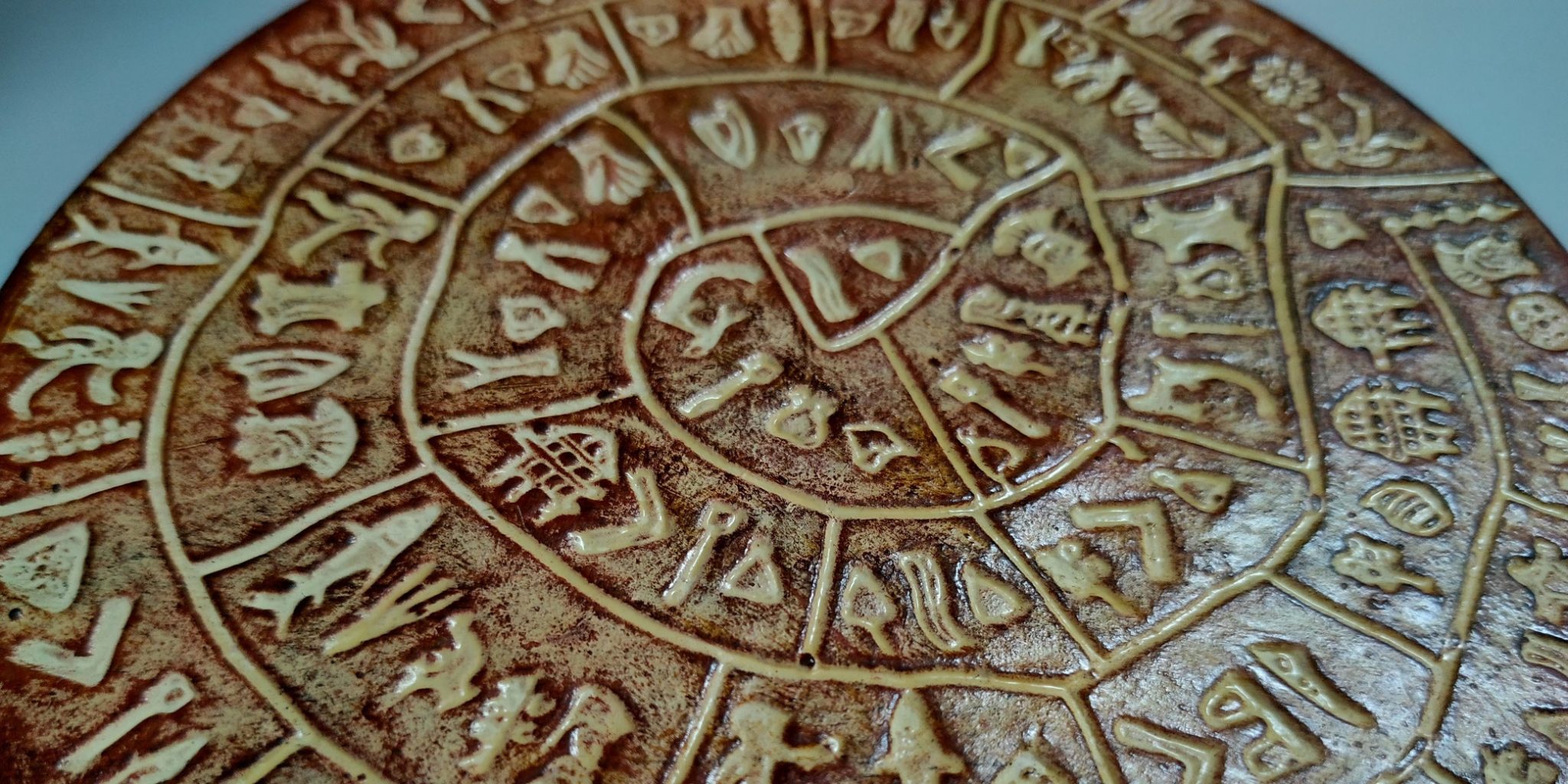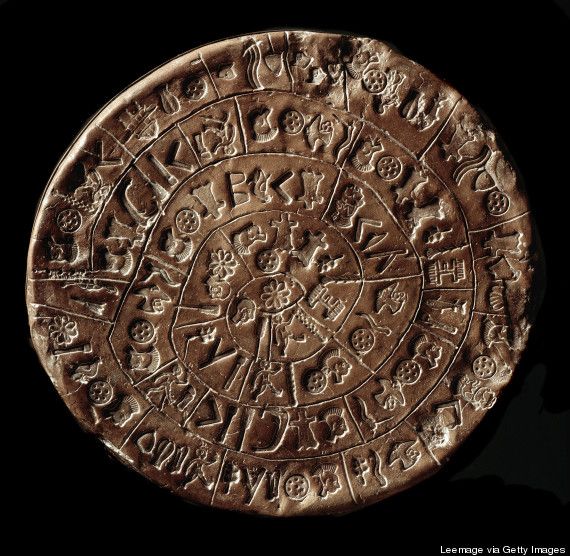A Spiral of Stamped Symbols from the Minoan Palace of Phaistos, Crete: The Phaistos Disc

The Phaistos Disc, an enigmatic artifact from the ancient Minoan civilization, continues to puzzle and intrigue scholars and enthusiasts alike. Discovered at the Minoan palace of Phaistos on the island of Crete, this fired clay disc is believed to date back to the middle or late Minoan Bronze Age, placing it squarely within the second millennium B.C.
Measuring approximately 15 cm (5.9 in) in diameter, the Phaistos Disc is covered on both sides with a spiral of stamped symbols. These symbols, arranged in a spiral pattern, are believed to represent a form of writing or script, although their exact meaning and purpose remain a subject of debate and speculation. The disc’s unique design and inscriptions have led to numerous theories regarding its origin, purpose, and significance, making it one of the most enigmatic artifacts of the ancient world.

The discovery of the Phaistos Disc at the Minoan palace of Phaistos provides valuable insights into the cultural and technological achievements of the Minoan civilization. As one of the largest and most important palaces of the Minoan period, Phaistos was a center of political, economic, and cultural activity, serving as a hub of trade and commerce in the eastern Mediterranean. The discovery of the disc within the palace complex suggests that it may have held special significance for the rulers and inhabitants of Phaistos, perhaps serving as a ceremonial or religious object.
The symbols stamped onto the surface of the Phaistos Disc have been the subject of intense study and analysis since its discovery. Scholars have proposed various theories regarding the script’s decipherment, ranging from attempts to identify individual signs with known syllabic or logographic scripts to more speculative interpretations based on symbolism, numerology, and even musical notation. Despite decades of research, however, the script remains undeciphered, and the meaning of the symbols continues to elude modern scholars.
One of the most enduring mysteries surrounding the Phaistos Disc is the identity of its creators and the purpose for which it was made. Some scholars believe that the disc was produced by the Minoans themselves, while others speculate that it may have been imported from another culture or civilization. The spiral design and stamped symbols bear similarities to other artifacts found in the Aegean region, suggesting that the disc may have been part of a wider cultural tradition shared by the ancient peoples of the eastern Mediterranean.

In recent years, advances in technology and interdisciplinary research have shed new light on the Phaistos Disc and its significance. High-resolution imaging techniques, such as photogrammetry and reflectance transformation imaging, have allowed researchers to examine the disc in greater detail, revealing previously unnoticed features and patterns. Additionally, interdisciplinary approaches combining linguistics, archaeology, and computer science have led to new insights into the nature of the script and its possible relationship to other writing systems of the ancient world.
Despite these advances, however, the Phaistos Disc remains one of the most enduring mysteries of archaeology, its secrets still waiting to be unlocked. As scholars continue to investigate and analyze this remarkable artifact, it serves as a reminder of the enduring allure of the ancient world and the mysteries that still lie hidden beneath the sands of time. Whether the Phaistos Disc will ever be deciphered remains uncertain, but its enigmatic presence continues to inspire curiosity and fascination, offering a tantalizing glimpse into the lost civilizations of the past.











